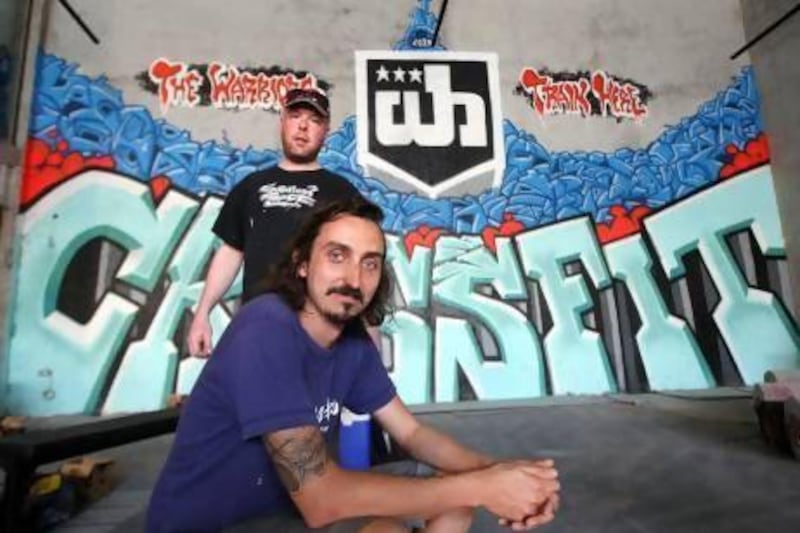If ever there was a sign that graffiti had made it into the mainstream, it’s to be found on the walls of the soon-to-open Warehouse Gym on Umm Suqeim Road in Dubai. This subversive, controversial art form may not be found emblazoned across -Dubai’s buildings and public transport systems, as it is in other cities, but that’s not to say that there’s no place for it in the emirate.
When Edris Alrafi was envisaging the interiors of his hip new 20,000 square-foot urban-style workout space, he decided that graffiti art would perfectly communicate the Warehouse Gym ethos. He enlisted the help of the Bristol-based graffiti artists Tom Deams and Shaun Sepr, who spent a month covering the walls with bold patterns, inspiring slogans and larger-than-life characters.
How does one become a graffiti artist?
Tom: I started painting around 1988. I'm pretty much self-taught, and learnt by watching other people and picking up tips. I became influenced by reading a couple of books in the 1980s called Subway Art and Spray Can Art. These were examples of graffiti art produced in New York in the late 1970s and early 1980s. You had beautiful -typography, fonts, letter forms and characters, all sprayed onto the side of New York subway trains by kids from poor backgrounds. They saw the lights on Broadway and decided to write their own names in lights, as it were.
Shaun: For me, it started as a hobby that most kids have – art, drawing and painting. I've just not grown out of it, I suppose. It's a great way to express yourself.
How did you get involved with this project?
Tom: Somebody put us in touch with the gym owner, who was looking for a graffiti artist. He wanted an urban element. He almost wanted it to look like we'd been here before the gym came in – as if the walls were painted already and then a gym was built around that. He had a lot of ideas but we also had a lot of input into how it looks. There's been a really good balance. As a client, he's allowed us to stick to our own styles, which is great artistically.
Is that the problem with painting for commercial spaces? Don’t you immediately lose some of that freedom that has been so fundamental to the movement?
Tom: It depends on the client, at the end of the day. It's an effort to do something that goes against the grain. It doesn't feel right spiritually, I guess.
Shaun: It's nice to keep some of that freedom. To be asked to do something that is a carbon copy of an image that someone has seen is a bit soul-destroying.
Tell us about your specific styles.
Tom: I'm interested in a few elements of graffiti. One is Wild Style, which is basically letter forms and a tag name. My tag is Deam, for example, so I produce that word and make it into quite a complicated structure. I also like a thing called Blockbusters, which is big, really simple-style letters. So I mainly work with letters and the architecture of the letter form.
Shaun: I'm into people and characters. This is quite a big part of graffiti as a style but it's obviously very different to letters.
Tom: That's why we work so well together. We're just two geeks really. People say: "You should have grown out of that by the time you're 20." The problem is, by the time you reach that age, you're just starting to get good. I'm nearly 40 now. The idea is that no matter how long you've been painting, you can always learn something from someone else, even if they have only been painting for a year. Once you believe that you know everything, you might as well give up. You should always be learning and keep an open mind. And not just in art – in life.
Follow us
[ @LifeNationalUAE ]
And follow us on Facebook for discussions, entertainment, reviews, wellness and news.






